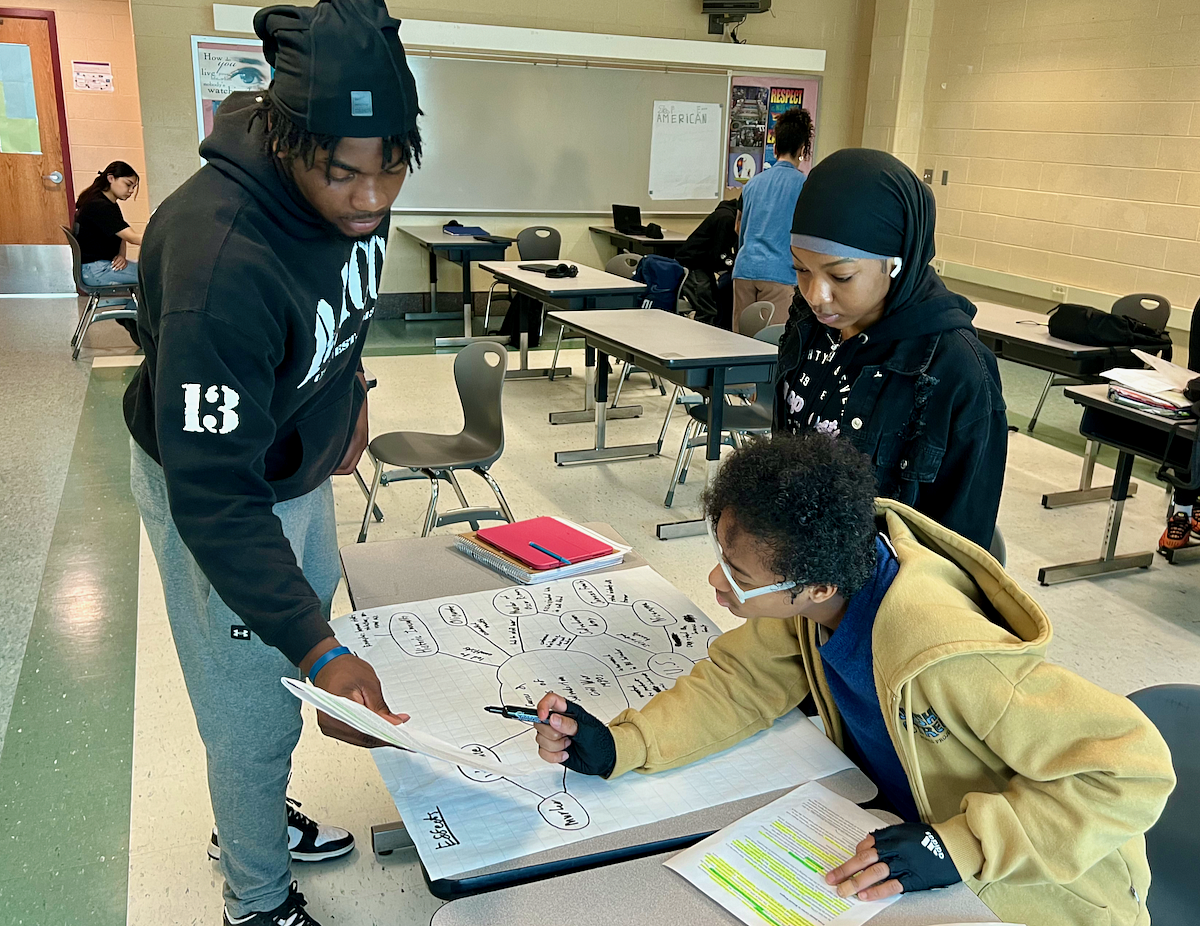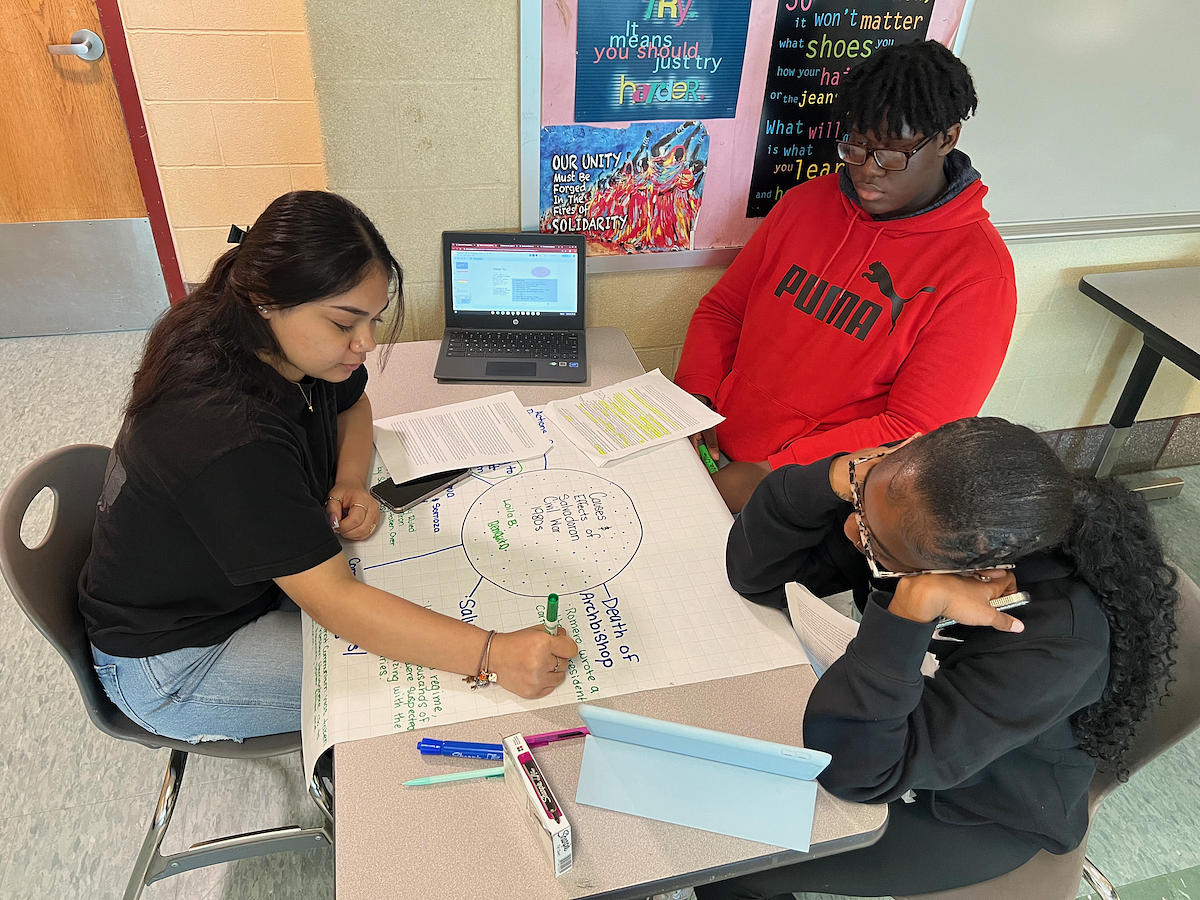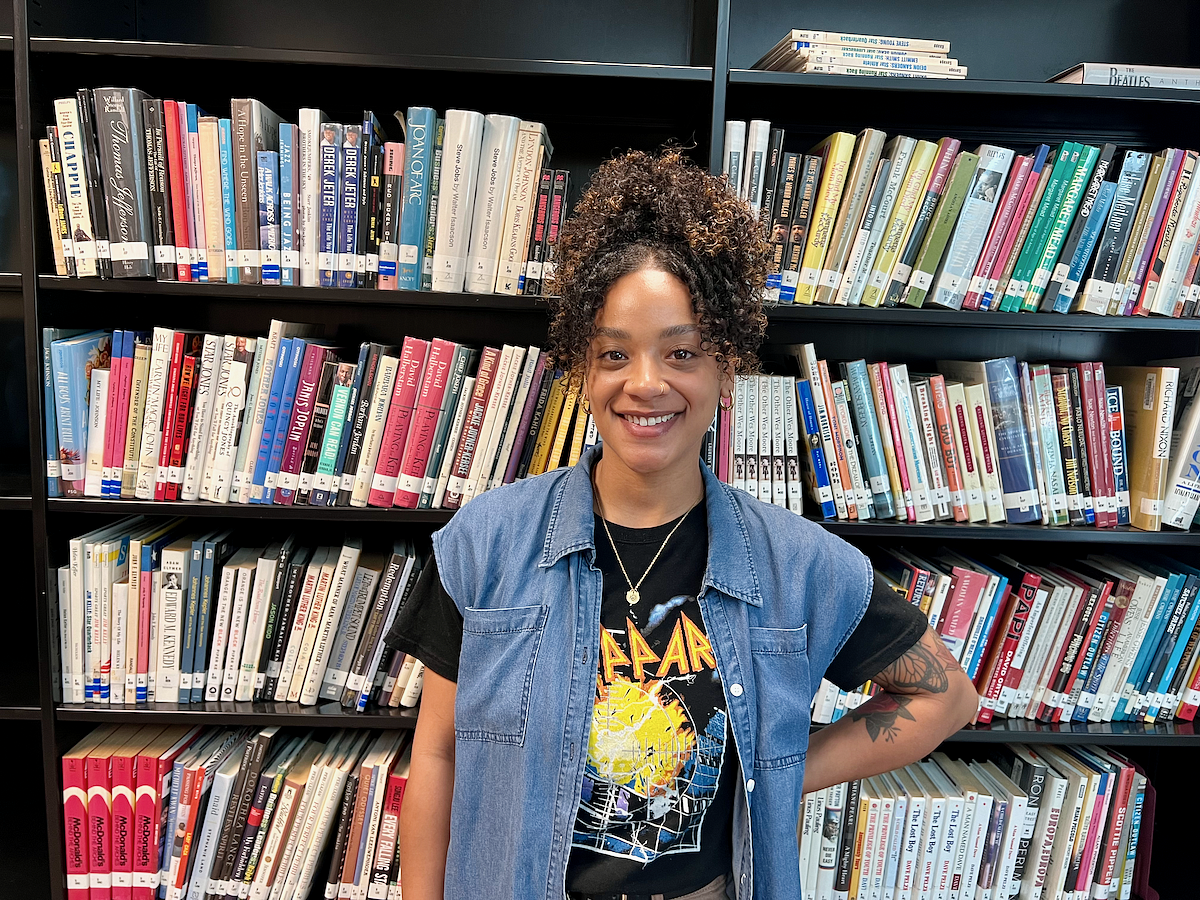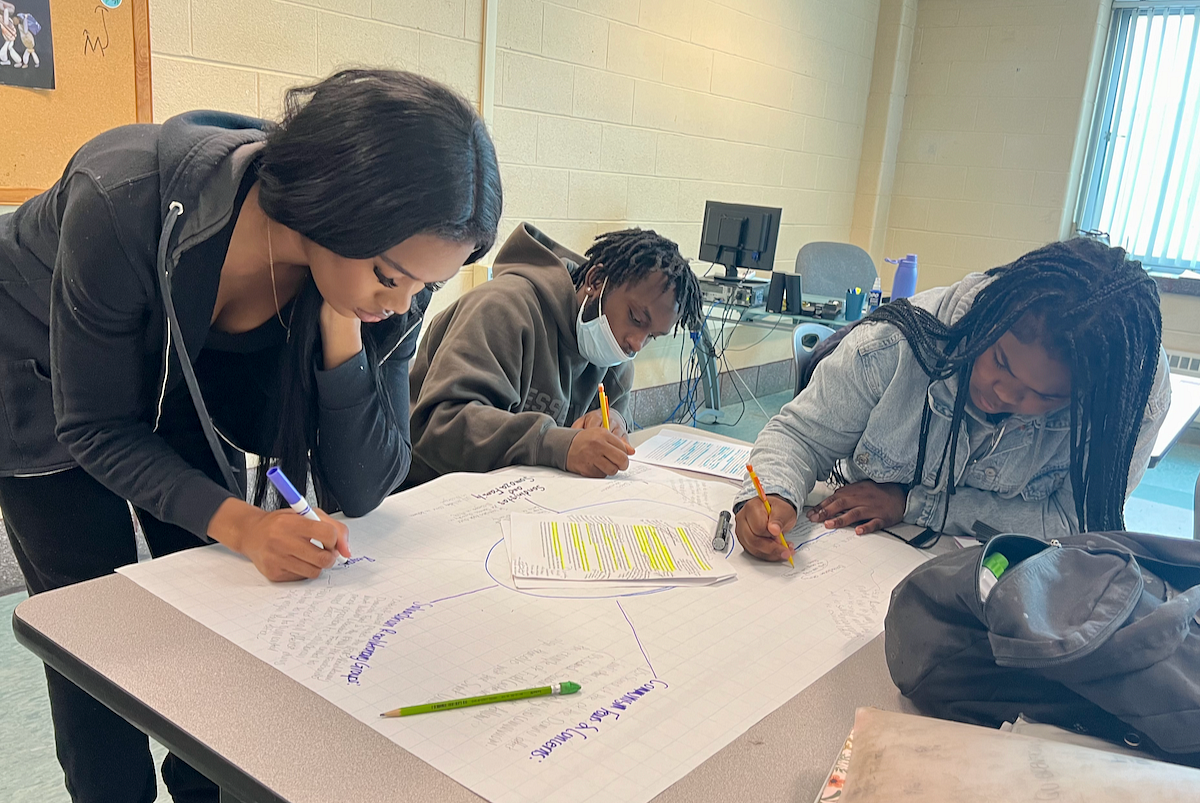
Maya McFadden Photo
Juniors Josh, Radwaa, and A'Mere map out the Salvadoran Civil War.
Hill Regional Career High School junior Josh Burgess wrote the words “causes and effects of Salvadoran Civil War 1980s” inside a circle, and then drew lines connecting the words “historic inequality,” “murder,” and “oligarchs” to that circle.
He did so as part of an African American and Latino studies course that encourages students to understand how different parts of world history relate to one another — and that builds off of recent state legislation designed to boost the diversity of topics covered in Connecticut social studies classrooms.
This particular lesson took place Friday morning at the 140 Legion Ave. high school.
History teacher A’Lexus Williams presented a lesson on the Salvadoran Civil War and the role the United States played in it to her class of 10th through 12th graders.
In the second-floor classroom, students made concept maps in groups detailing the causes and effects of the civil war and its key players and events, and how they all connect, to get a better understanding of Central American military corruption.
The class’s current unit is focused on the history of El Salvador in the 1980s.
In their group, juniors Josh, Radwaa, and A’Mere created a map that connected the murder of Óscar Romero to the Salvadorian Army, which the United States supported heavily along with Nicaragua and the violent rulers known as the Somoza Family.
The students discussed the United States’ intervention in Nicaragua to understand parallels to what was happening in nearby places.
The class itself, which has been taught at Career for the past few years, emerged from 2019 state legislation that made Connecticut the first in the country to require all high schools to offer courses on African American, Black, Puerto Rican, and Latino studies.


After checking students’ homework assignments to annotate a three-page text about the Salvadoran Civil War on Friday, Williams instructed students to put away their phones and headphones to then begin a group task of reflecting and analyzing what they learned from the article they had read for homework.
Williams, who has taught in New Haven for eight years, included the concept map activity in Friday’s lesson to help her students better familiarize themselves with not just what they learned from the text but also what they learned from their peers’ key takeaways. Friday’s lesson was pulled from Teaching for Change’s public lesson plans and resources made available to educators.
Before assigning groups, Williams checked each student’s level of understanding by having them write three or four sentences on an index card identifying two root causes to the social unrest and problems in El Salvador at the time.
Williams offered help as students did the five-minute opener by telling them what errors made her other class lose points. “You need to identify the causes and explain them. Don’t forget to explain,” she said. She also offered the class of 12 students a sentence starter example to get them going.
“Does anybody want me to clarify the question?” she asked before starting the five-minute timer.
The trios worked to identify as a team the connections between various moving parts and key players.
Williams provided the class with a list of terms and people, like former President Jimmy Carter and the Soviet Union, that needed to be included in their maps with explanations of how they connect to the war, which took place from 1979 to 1992 and saw over 75,000 people killed and 8,000 disappeared.
In four separate groups the students discussed what U.S support for the civil war looked like and how it impacted both the conflict and Ronald Reagan’s presidency, and they identified the role of the Somoza family.
The Friday classwork aimed to prepare students for a simulation activity coming up that will task them with reimagining what conversations could have looked like at the time by playing different stakeholder roles to pitch how the U.S response could have looked differently.
Dealing With Apathy & "Worksheet Mentality"

History teacher A'Lexus Williams.
One of Williams’s main goals Friday was not only to teach the class about the Salvadoran Civil War but to help students further develop their discussion and reflection skills. Those two areas are skills Williams said that all students significantly struggle with as a result of the pandemic’s in-person school closures and from an education model that programs students to lack self reflection skills before high school and learn from curriculums that don’t teach continuity.
Williams said she finds that in order to support students’ “deeper synthesis of concepts,” they often best learn from their peers. She often does group work in her class, and her students must have structure and routine.
Collaborative learning has helped the class to grasp topics they at times can’t grasp individually or through direct instruction, Williams said. Building on thinking skills and continuity is essential, she said, because today’s students have developed a “worksheet mentality” where they don’t exercise their higher-order thinking skills, make connections, analyze, or interpret.
“The phone has become their only source of social interaction,” she added.
That’s a key takeaway Williams hopes for her students to leave with at the end of her class. “It’s about creating independent learners, for all classes. They need to know how to access information, understand it, and critique it,” she said.
Rather than retreating from challenges requiring critical thinking or self reflection, Williams pushes her students to embrace the experience with the help of their peers. As a result, Williams said she has seen student apathy shift in her classroom.
Toward the end of Friday’s class, Career student Laila told her group that she hopes they will get to do a gallery walk of the other groups’ concept maps. Minutes later, Williams announced to her class that they would.
Williams said her routine classroom activities have also helped her reach her students. Rather than increasing student anxiety about unstructured classes, she instead has created a routine for her students to do similar activities with different content throughout the year.
“I don’t want their amygdala to be so unregulated and shut down because of curve balls. That’s when they move to fight-or-flight mode and can’t access the higher parts of their brain that allow understanding and creativity,” she said.





To take high school students who know NOTHING of history and toss them into 1980's El Salvador to rag on what the US involvement was is not really history. It is more leftist indoctrination from a Marxist point of view into victim studies that NH seems to like including. This explains lot of the ignorance of our college campus toddlers as well